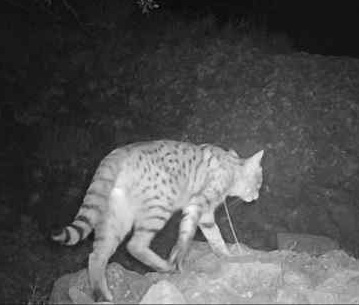In recent years, the use of automatic cameras, the so-called camera traps, has been introduced into the scientific practice of the reserves of Turkmenistan. With their help, it has become customary to observe rare species of animals in their natural habitat, which, due to their secretive lifestyle in the wild, are extremely rarely seen.
So, with the help of camera traps, workers of the Badhyz reserve managed to establish observation of a leopard with two cubs, in Kopetdag - of adults of a bezoar goat, according to the newspaper “Neutral Turkmenistan”.
Periodically, a wolf, a hyena got into the camera lens.
In Koytendag, this method has been practiced since 2013, it gave a brilliant result - a lynx with two kittens got into the frame.

The surveillance camera is equipped with a motion sensor that turns on when there is movement in the frame. Only a small red light speaks of the ongoing video recording, the blinking of which attracts the attention of animals. Predators even tried to attack it. The rest of the camera is almost invisible. The capacity of the memory card allows you to conduct video surveillance for up to six months without disturbing the animals.
Since November 2019, one of the rare feline species, the manul, has been recorded three times by camera traps. According to scientific sources, this animal was noted in 1940 in the Central Kopetdag and within the boundaries of the isolated ecosystem of the Great Balhan ridge, which is difficult to study and isolated. Thanks to video surveillance in these places, scientists clarify the current status of the manul, how rare it is. This work meets the objectives of preparing the next 4th edition of the Red Book of Turkmenistan (the first edition was published in 1985, the second in 1999, and the last edition in 2011). To study in detail the characteristics of the biology of the animal, determine its approximate number and factors of concern, correct distribution data, strengthen the scientific potential for the conservation of the species - all this is on the working agenda of biologists.
Over the years of using automatic cameras, hundreds of video materials have been collected, according to which you can study the habits of animals, see how they behave in the absence of a factor of anxiety and anxiety, raise cubs, migrate or look for food.
.jpg)
The database contains multiple images of the leopard, the largest wild cat in Turkmenistan. Camera traps recorded the animal in all its main habitats in our country - Kopetdag, Badhyz and, most importantly, within the mountains of the big Balhan, where a nature protection area will soon be created.
Also recorded on the video were reed and dune cats, herds of argali.
Also read:
